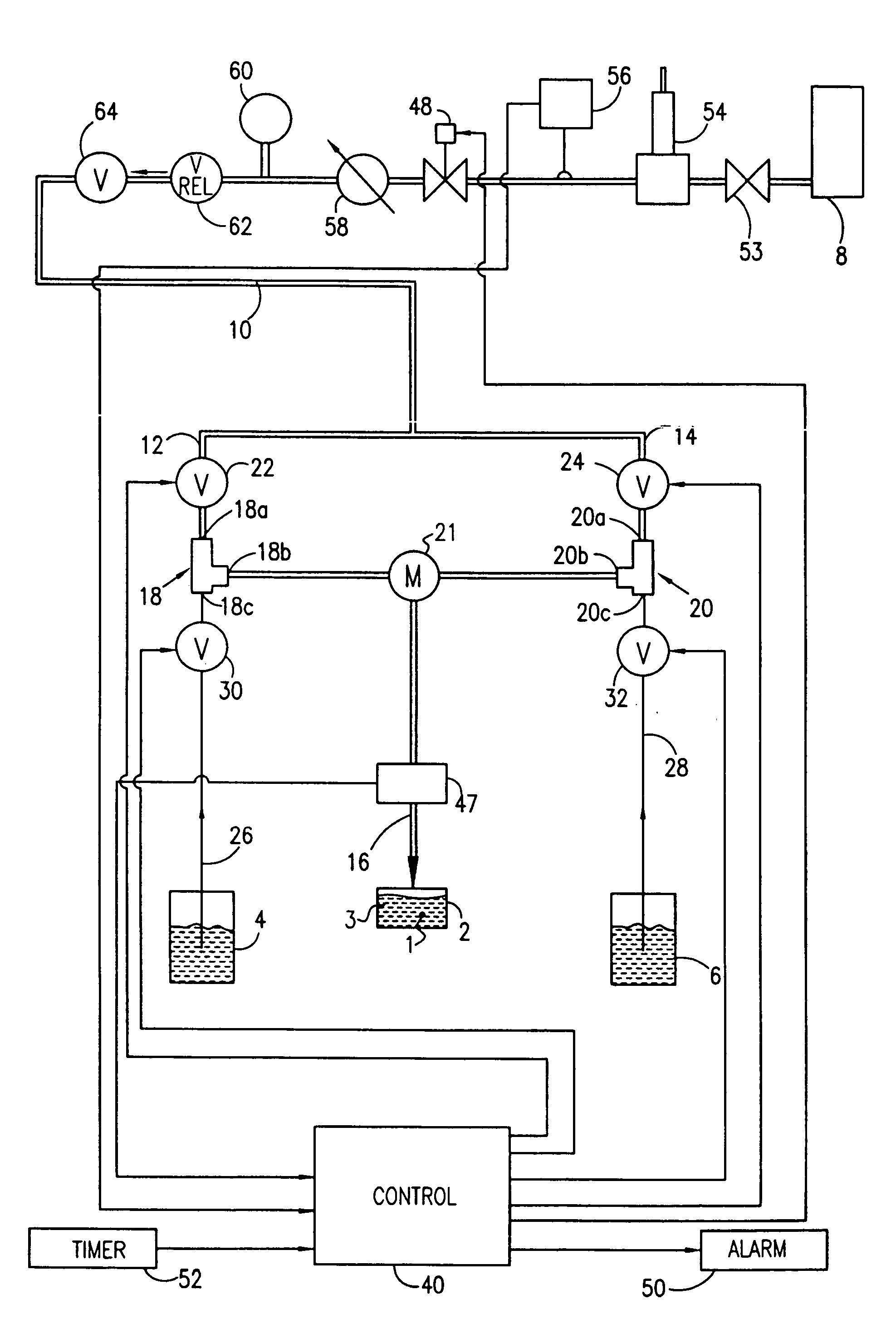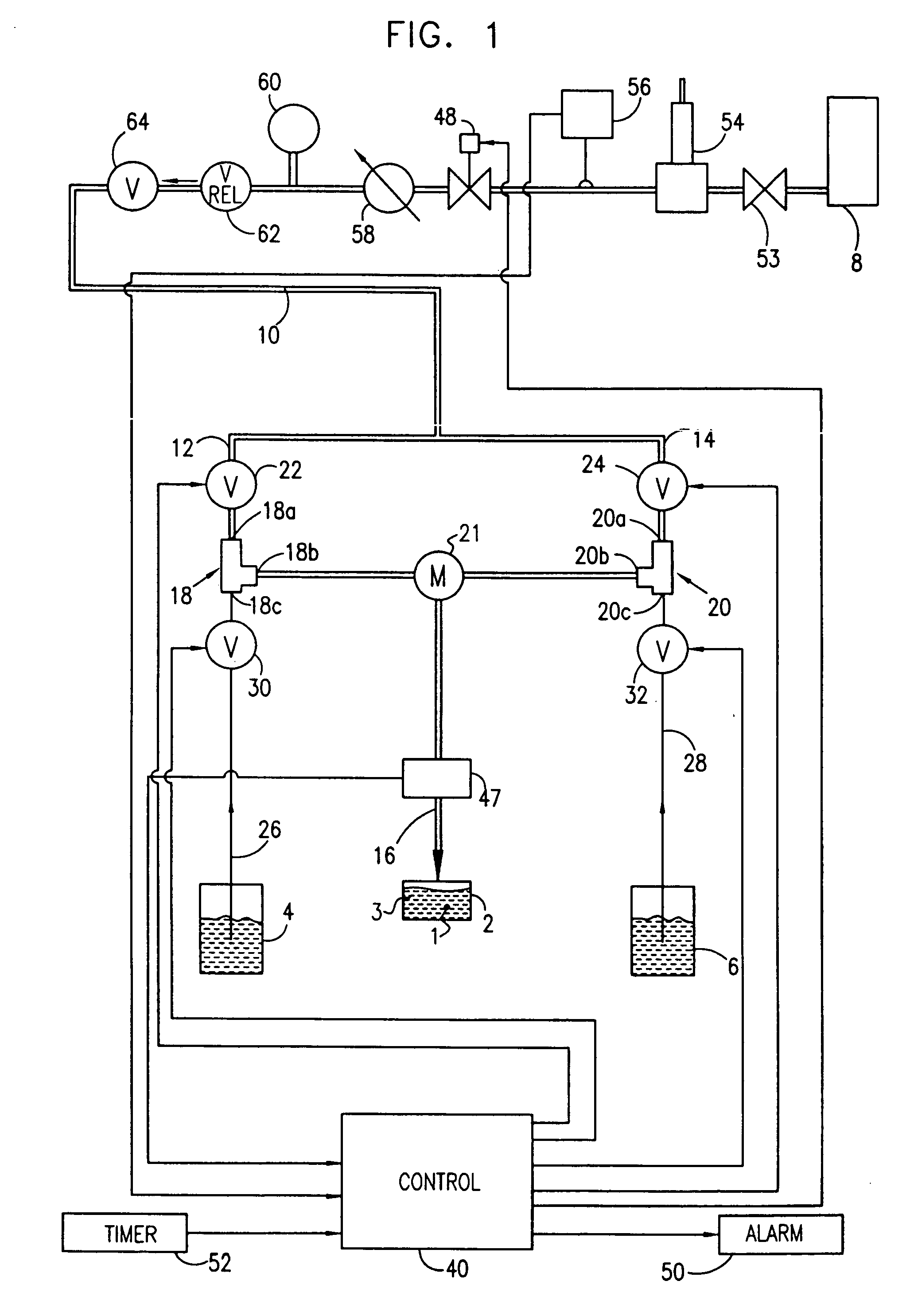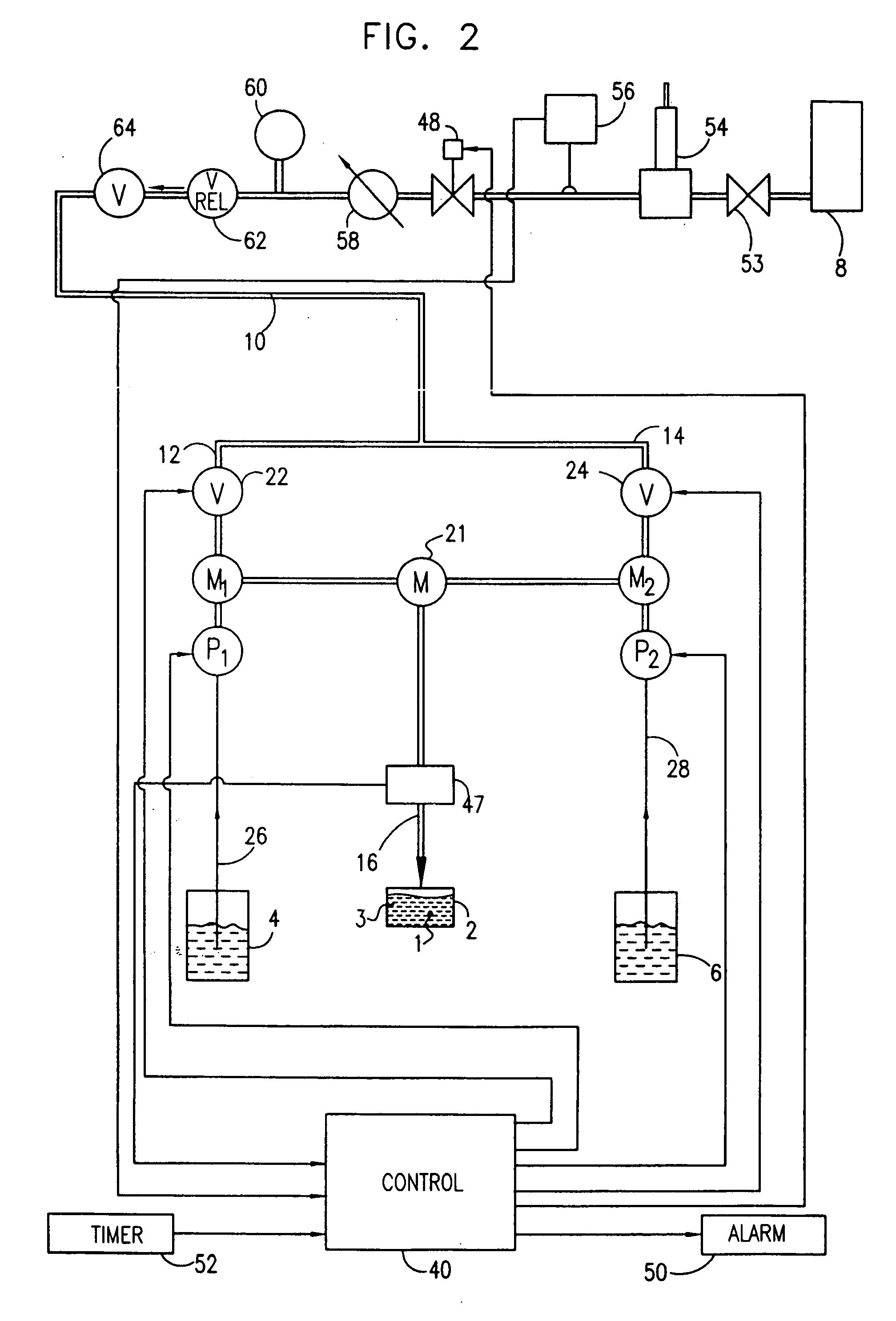Control of development of biofilms in industrial process water
a technology of biofilms and industrial process water, applied in the field of control of biofilm development, can solve the problems of increasing power consumption in the pump, reducing the efficiency of industrial operations, and biofilms to form heavy biomass on the surface of the vessel, so as to increase the persistence of hydrogen peroxide
- Summary
- Abstract
- Description
- Claims
- Application Information
AI Technical Summary
Benefits of technology
Problems solved by technology
Method used
Image
Examples
example 1
Formation of Biofilm in a Model System
[0233] Formation of biofilm on stainless steel coupons in the presence or absence of an oxidizing biocide or a biofilm inhibiting substance was evaluated in the laboratory. The test system consisted of (a) three closed flasks each containing 20L nutrient-rich medium (diluted three-fold from its recommended use concentration), (b) three closed cells containing stainless steel coupons hanging freely, and (c) three identical circulation pumps, each pump connected via plastic pipes to one of the flasks and to one of the cells. The system was placed in a thermostatic room at 35° C.
[0234] An innoculum containing a mixed culture of slime-forming bacteria which had been isolated from a paper machine was added to each of the flasks. An oxidizer containing a 5 ppm mixture (expressed as total Cl2) of bromochlorodimethylhydantoin (an oxidizing biocide which is a source of HOBr and HOCl) (hereinafter “mixed halogens”) was added to the first flask once a da...
example 2
Waste Water Fouling Control
[0238] Treated wastewater was piped from a wastewater treatment plant to a location 7 kilometers away. Over the course of years, it was noted that the pipes became clogged and the water flow rate through the pipes decreased. Use of an exceedingly high concentration of Cl2 (feeding up to 50 ppm, i.e. addition of NaOCl at a level of up to 50 mg / l (calculated as Cl2)) was found to be ineffective for improving water conductivity in the pipes. Mechanical cleaning (“pigging”) of the pipes resulted in a significant improvement in water conductivity immediately after cleaning, but this improvement lasted only a few days, after which time the pipes attained the level of clogging observed prior to the pigging of the pipes.
[0239] Use of the present invention was effective in controlling the biofilm. Prior to beginning a course of treatment using the present invention, the Hazen-Williams coefficient (HW) in the pipe was determined to be ˜90. (The Hazen-Williams coef...
example 3
[0241] Treated wastewater was pumped through several pipes of 10 m length and 4 inches inner diameter in a pilot plant. Biofilm had been growing naturally on the pipe surfaces for several months prior to the commencement of treatment. Pressure drop through each pipe was monitored on-line, and average HW coefficients were calculated. During the trial, control pipes were left untreated, and the remaining pipes were treated with either (a) the biofilm inhibiting substance Fuzzicide BAC, produced on-site in accordance with the invention of U.S. Pat. No. 5,976,386, 10 ppm expressed as total chlorine for three hours three times a week, or (b) a chloramine produced from ammonium chloride which is part of the prior art preceding U.S. Pat. No. 5,976,386 and U.S. Pat. No. 6,132,628, pre-formed as described in the comparative examples of U.S. Pat. No. 6,132,628, applied at 10 ppm (expressed as total chlorine) for three hours, three times a week.
[0242] The biofilm inhibiting substance in this ...
PUM
| Property | Measurement | Unit |
|---|---|---|
| volumes | aaaaa | aaaaa |
| concentration | aaaaa | aaaaa |
| length | aaaaa | aaaaa |
Abstract
Description
Claims
Application Information
 Login to View More
Login to View More - R&D
- Intellectual Property
- Life Sciences
- Materials
- Tech Scout
- Unparalleled Data Quality
- Higher Quality Content
- 60% Fewer Hallucinations
Browse by: Latest US Patents, China's latest patents, Technical Efficacy Thesaurus, Application Domain, Technology Topic, Popular Technical Reports.
© 2025 PatSnap. All rights reserved.Legal|Privacy policy|Modern Slavery Act Transparency Statement|Sitemap|About US| Contact US: help@patsnap.com



